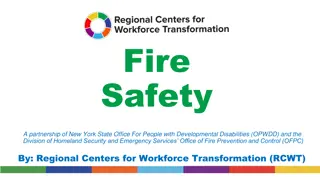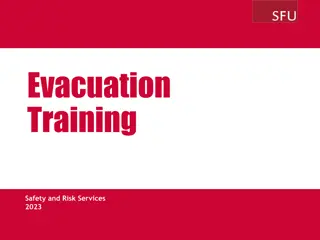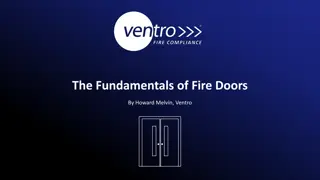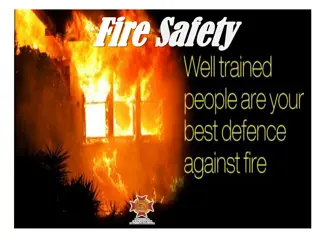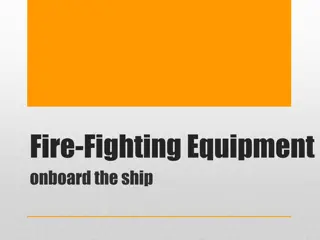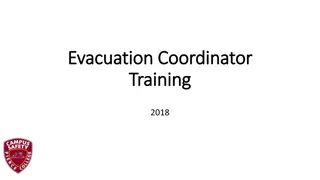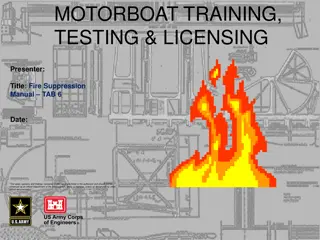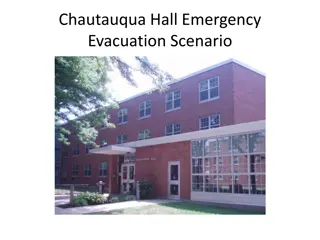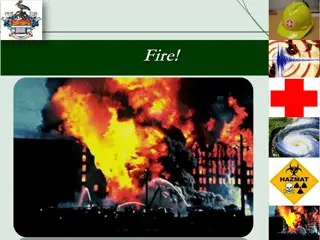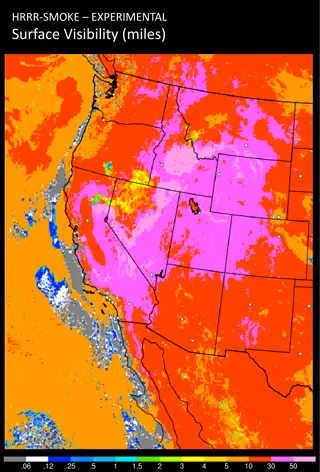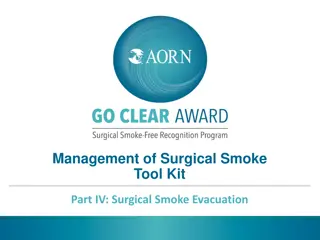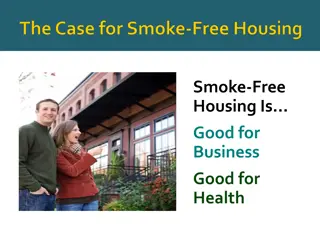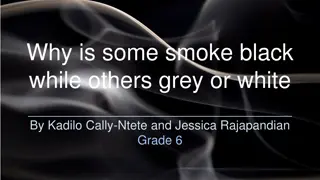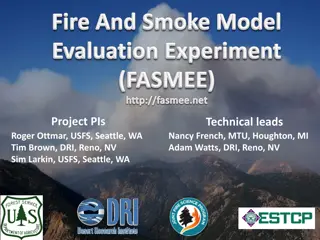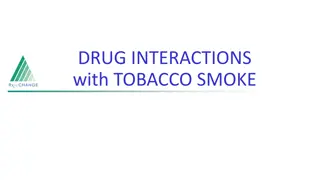
Innovative Research on Evacuation Behavior in Fire Scenarios
Explore cutting-edge studies on evacuation behavior during fires, featuring insights into risk-taking decisions, route selection, and smoke exposure effects. Dive into the impact of individual risk preferences and neighbor behaviors on evacuation strategies in various VR simulations.
Download Presentation

Please find below an Image/Link to download the presentation.
The content on the website is provided AS IS for your information and personal use only. It may not be sold, licensed, or shared on other websites without obtaining consent from the author. If you encounter any issues during the download, it is possible that the publisher has removed the file from their server.
You are allowed to download the files provided on this website for personal or commercial use, subject to the condition that they are used lawfully. All files are the property of their respective owners.
The content on the website is provided AS IS for your information and personal use only. It may not be sold, licensed, or shared on other websites without obtaining consent from the author.
E N D
Presentation Transcript
Proulx 2001 Johnson 2005 Proulx, 2001 / herding effect Helbing et al. 2000 ; Schadschneider et al. 2009 ; Helbing & Johansson 2010 ( or ) ( ) ( 100/80/60%)---- 3
/ Keywords Fu, M., Liu, R., & Zhang, Y. (2021). Safety science, 140, 105245. Evacuation Risk-taking behavior Route selection Smoke Risk preference Why do people make risky decisions during a fire evacuation? Study on the effect of smoke level, individual risk preference, and neighbor behavior. 9
/ Lin et al., 2020a Kobes et al. (2010a) 31% (Hofinger et al., 2014)
VR (Kinateder et al., 2014a) VR (Kinateder et al., 2014a, Zou et al., 2017, Tucker et al., 2018) VR (Ronchi et al., 2015, Haghani and Sarvi, 2018). VR VR Vilar 2013 Kinateder 2014b Kinateder 2018 Ronchi 2016 2019 2020b )
VR (Vilar et al., 2013) (Lovreglio et al., 2014, Lovreglio et al., 2016a) (Vilar et al., 2013, Zhu et al., 2020b) (Arias et al., 2019, Kinateder et al., 2019) (Kinateder et al., 2014b, Kinateder et al., 2018, Lin et al., 2020b) (Lovreglio et al., 2016a), ( Kinateder et al., 2018 ), / (Drury et al., 2009b) (Bode and Codling, 2013, Lovreglio et al., 2014, Tucker et al., 2018) ( Kinateder et al., 2018 , Tucker et al., 2018 , Lin et al., 2020c ), Lin et al., 2019
(see also Altman and Taylor, 1973; Kohring and Kastenholz, 2000; Rubin, 1973; cf. Strickland, 1958). 17
(Kantowitz et al., 1997; Lee and Moray, 1992; Lee and Moray, 1994; Riley, 1996). Kantowitz et al. (1997) Lee and Moray (1994) 18
(Muir and Moray, 1996) Lee and Moray (1992) (Lee and Moray, 1992; Muir and Moray, 1996) 19
(Lee and Moray, 1992; Lewandowsky et al., 2000; Moray et al., 2000; Muir, 1988; Sheridan and Hennessy, 1984, among others) Muir (1987) (Muir, 1987; cf. Parasuraman and Riley, 1997) 21
(Muir and Moray, 1996) Lee and Moray (1992) (Lee and Moray, 1992; Muir and Moray, 1996) 22
/ Keywords The effects of errors on system trust, self- confidence, and the allocation of control in route planning 10 10 MER De Vries, P., Midden, C., & Bouwhuis, D. (2003). International Journal of Human-Computer Studies, 58(6), 719- 735. System trust Self confidence Control allocation Route planning 23


